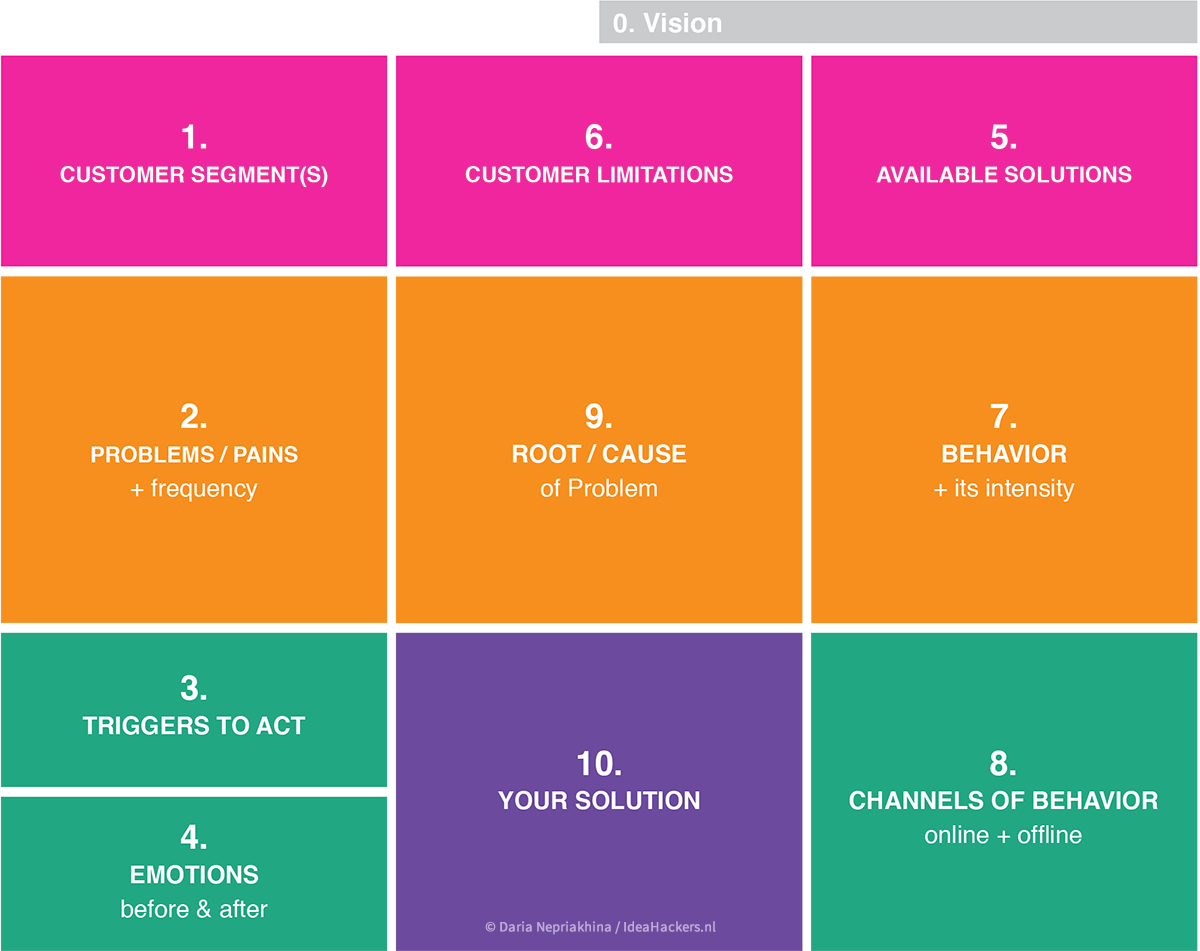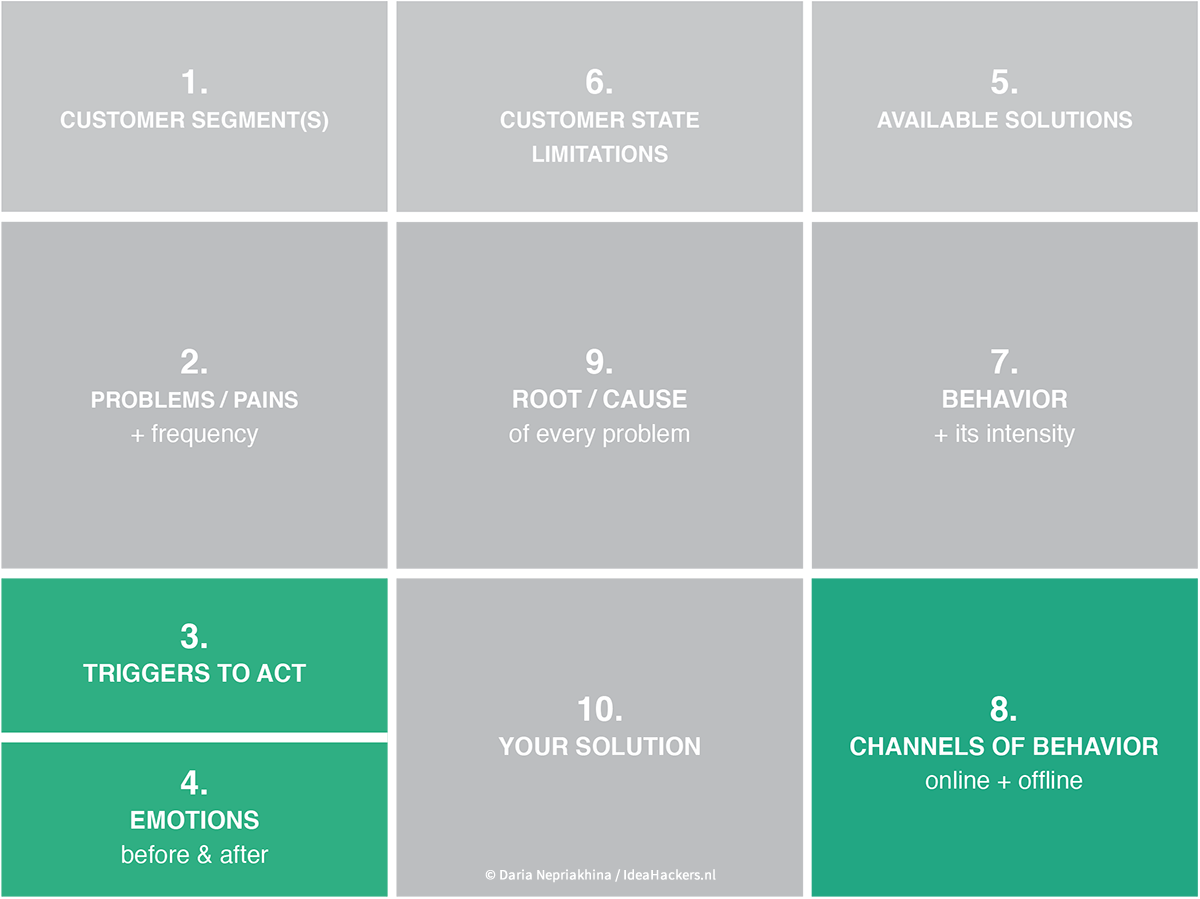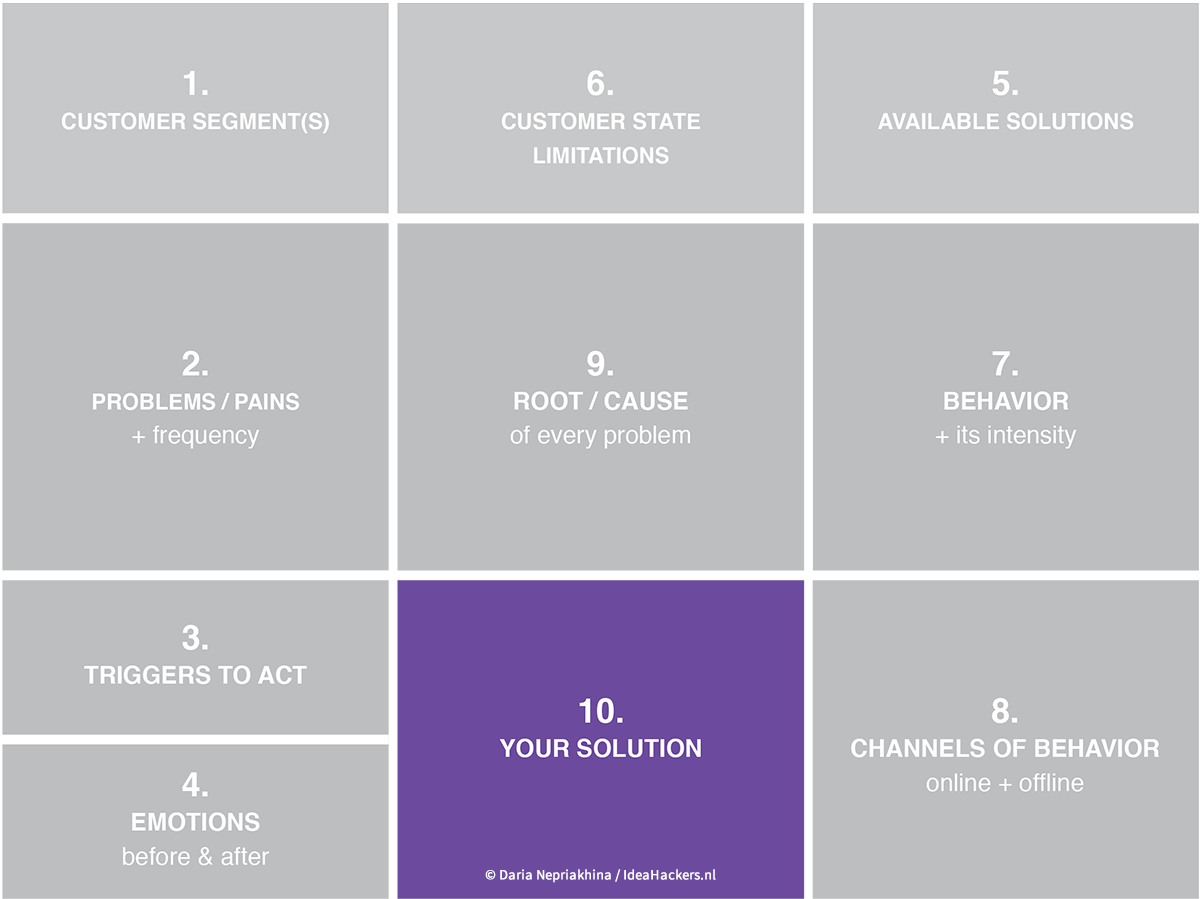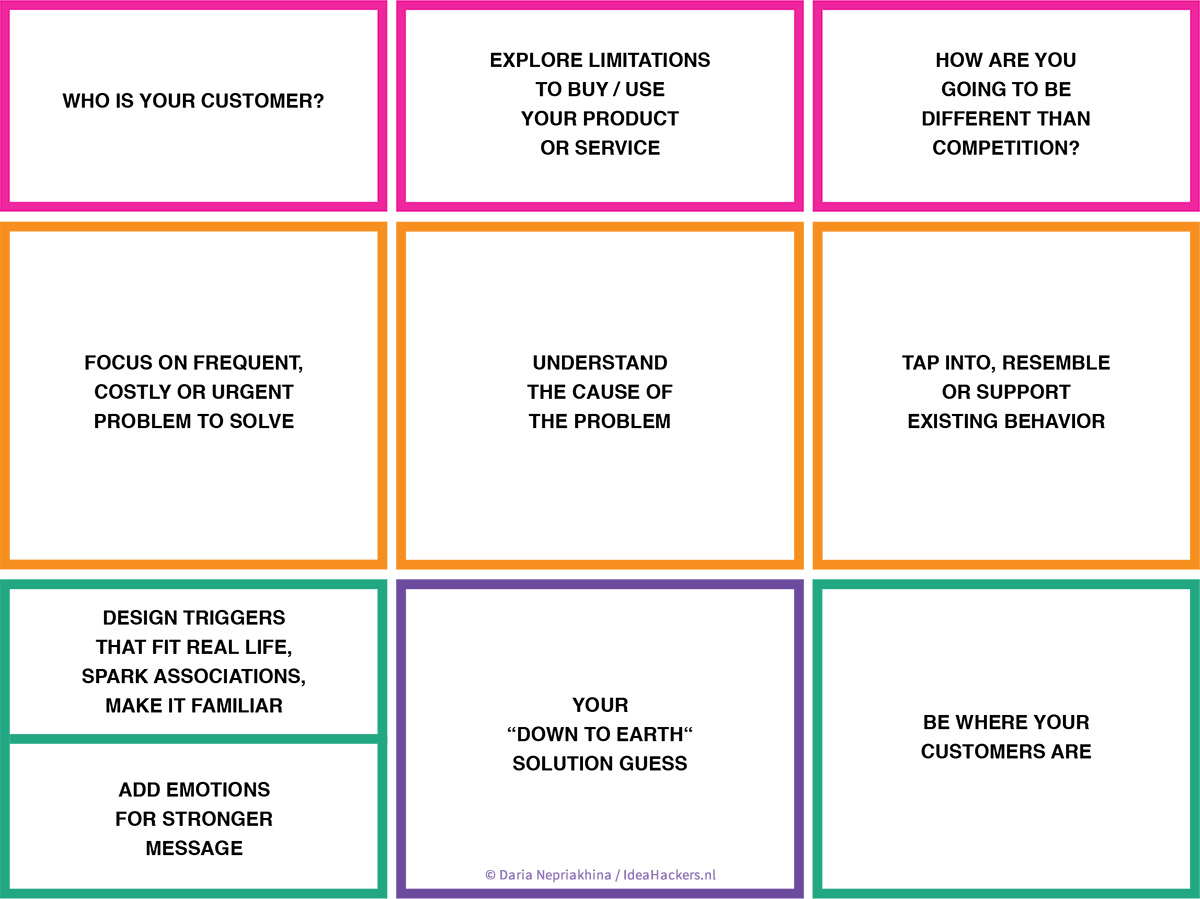The Problem-Solution Fit canvas, explained.
Translate problems into solutions that will be adopted.
The Problem-Solution Fit canvas is based on the principles of Lean Startup, LUM (Lazy User Model) and User Experience design. It helps entrepreneurs, marketers and corporate innovators identify behavioral patterns and recognize what would work and why. It is a template to help identify solutions with higher chances of solution adoption, reduce time spent on testing and get a better overview of the current situation.
My goal was to create a tool that translates a problem into a solution, taking into account customer behavior and the context around it. None of the existing canvases or frameworks were giving me an overview and insight into the real customer situation during his/her decision-making process. With this template you will be able to take important information into consideration at an earlier stage and look at problem solving in depth. It increases your chances of finding problem-solution and product-market fit.
It helps you to:
Solve complex problems in a way that fits the state of your customers.
Succeed faster and increase your solution adoption by tapping into existing mediums and channels of behavior.
Sharpen your communication and marketing strategy with the right triggers and messaging.
Increase touch-points with your company by finding the right problem-behavior fit and building trust by solving frequent annoyances, or urgent or costly problems.
Understand the existing situation in order to improve it for your target group.
The structure
Customer State fit: to make sure you understand your target group, their limitations and their currently available solutions, against which you are going to compete.
Problem-Behavior fit: to help you filter out the noise and identify the most urgent and frequent problems, understand the real reasons behind them and see which behavior supports it. Is this behavior weak or infrequent — is it a problem worth solving?
Communication-Channel fit: to help you sharpen your communication with strong triggers, emotional messaging and reaching customers via the right channels.
Solution guess: translate all the validated data you have gathered into a solution that fits the customer state and his/her limitations, solves a real problem and taps into the common behavior of your target group.
1. Customer state fit
The goal: to help you understand your target group, their limitations and their available solutions, against which you are going to compete.
Questions to answer:
Who is your customer?
What limits your customer from acting when a problem occurs?
E.g. Spending power, network connection, available devices.What solutions are available to the customer when he or she is facing the problem?
What has he/she tried in the past?
What are the pros/cons of existing solutions?
2. Problem - Behavior fit
The goal: to help you filter out the noise and identify the most urgent and frequent problems, and understand the real reasons behind them and the behavior that supports them, i.e. Is this behavior, weak, infrequent, not intense enough? Is this a problem worth solving?
Questions to answer:
What problem do you solve for your customer?
There could be more than one, explore it.How often does this problem occur?
What is the cause of every problem on the list?
What does your customer do about the problem currently (around it / directly or indirectly related to it)?
How often does this related behavior happen?
3. Communication - Channel fit
The goal: to help you sharpen your communication with strong triggers, emotional messaging and reaching your customers via the right channels.
Questions to answer:
What triggers customer to act?
Which emotions do people feel before / after this problem is resolved?Use it in your communication strategy.
Where online does this behavior happen?
Extract online and offline channels from the Behavior block.
4. Solution guess / Problem - Solution fit
The goal: to match gathered data to the best solution that fits into customer behavior and constraints.
Rules of this block:
If you are trying to find a new solution to an existing problem, fill in this block after you’ve got a better overview of the real situation (complete the other boxes first).
If you are working on an existing solution (exploring growth strategies, problem with activation or solution adoption), then fill this block first, and then see whether your solution is still relevant after all the other blocks are filled in.
Try to spot patterns and repeated keywords by listing problems and behavior related to it.
For higher chances of solution adoption:
Think of possible solutions that fit the user state limitations, tap into existing behavior, resemble what is already familiar to your target group.
Take the best from alternative solutions — simulate natural triggers and tap into existing customer behavior, design a solution that is useful (solves a real problem), understandable (resembles what people already know) and accessible (available via the channels where these people are).
After giving it a first try you will likely realize that you were focusing on a different (less urgent or infrequent) problem, or that the real cause of the situation is worthy of attention. Extract repeated keywords (mediums, devices, situations), frequent behavior and emotions. That’s your cheat sheet towards a solution with a higher chance of adoption.
Working with the canvas
General approach.
State your Vision.
Define customer segment.
Fit within customer limitations and differentiate / be better than available solutions.
Solve a frequent*, urgent or costly problem by analyzing its root/cause, fit into frequent*/natural/familiar behavior which is directly or indirectly related to the underlying problem.
Identify triggers that work in real life, and emotions (before/after) to strengthen your communication, so that you can activate your potential customers via online and offline channels, by designing a solution that fits customer limitations, problems and existing behavior.
Your solution might become different over time, adjusting to an ever-changing market landscape, but your Vision should stay the same.
Solving frequently-occurring problems increases touch-points with customers and helps your company to gain trust on the way to the bigger goal. This is the first step to solving a bigger problem scope that might be too broad to tackle all at once from the start.
Download the canvas + workbook here.
This canvas has gone through 10+ rounds of significant changes and iterations based on feedback from entrepreneurs, corporate innovators, UXers, growth hackers, colleagues and friends.








